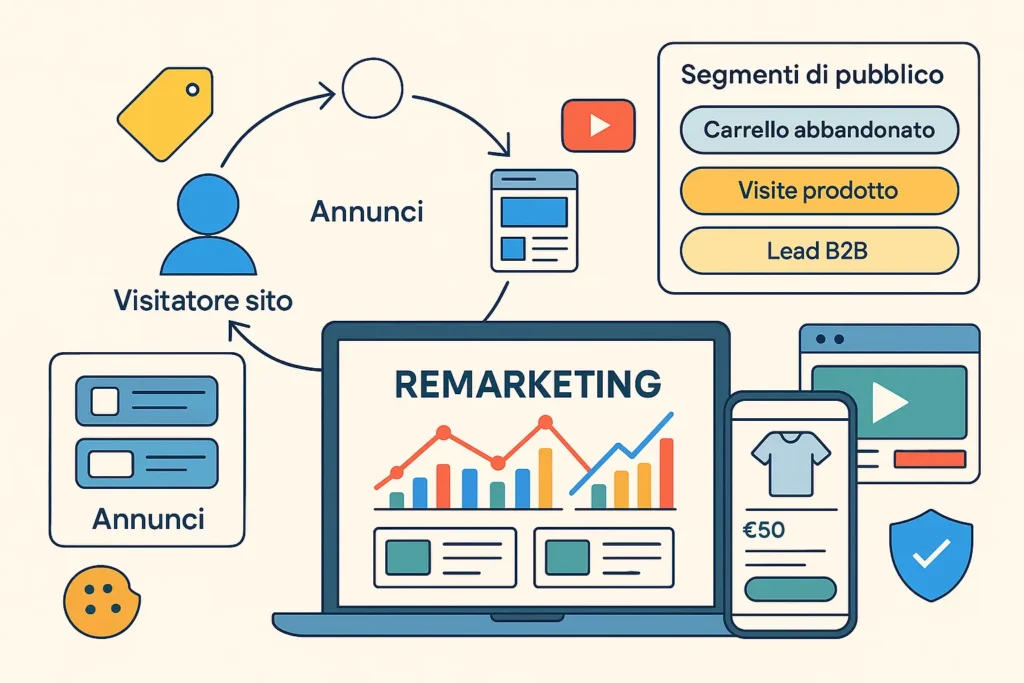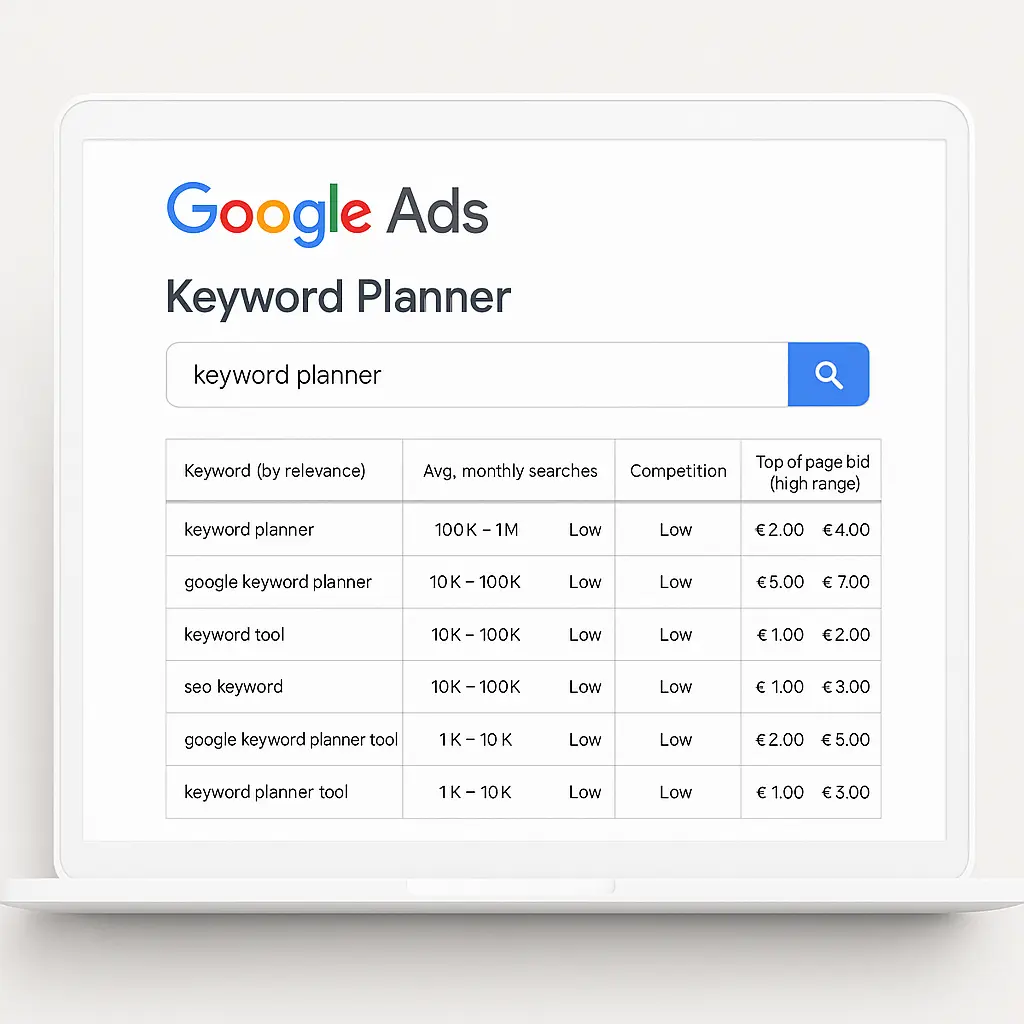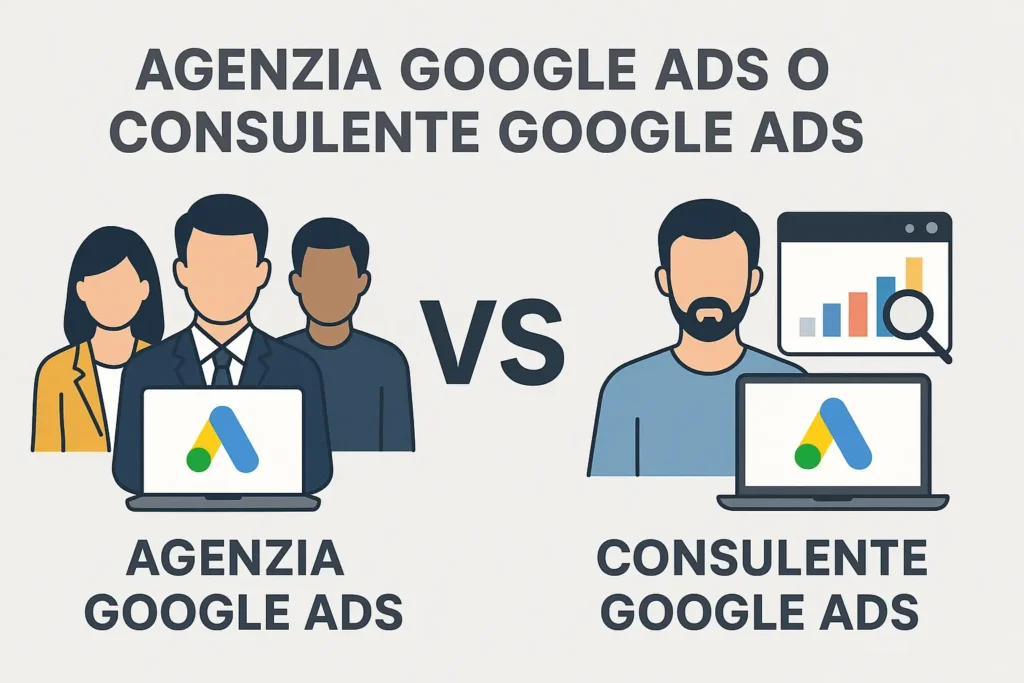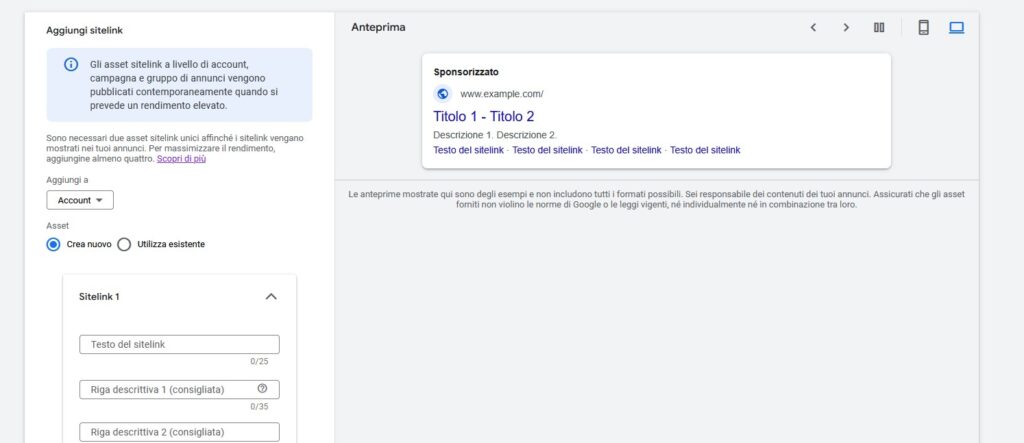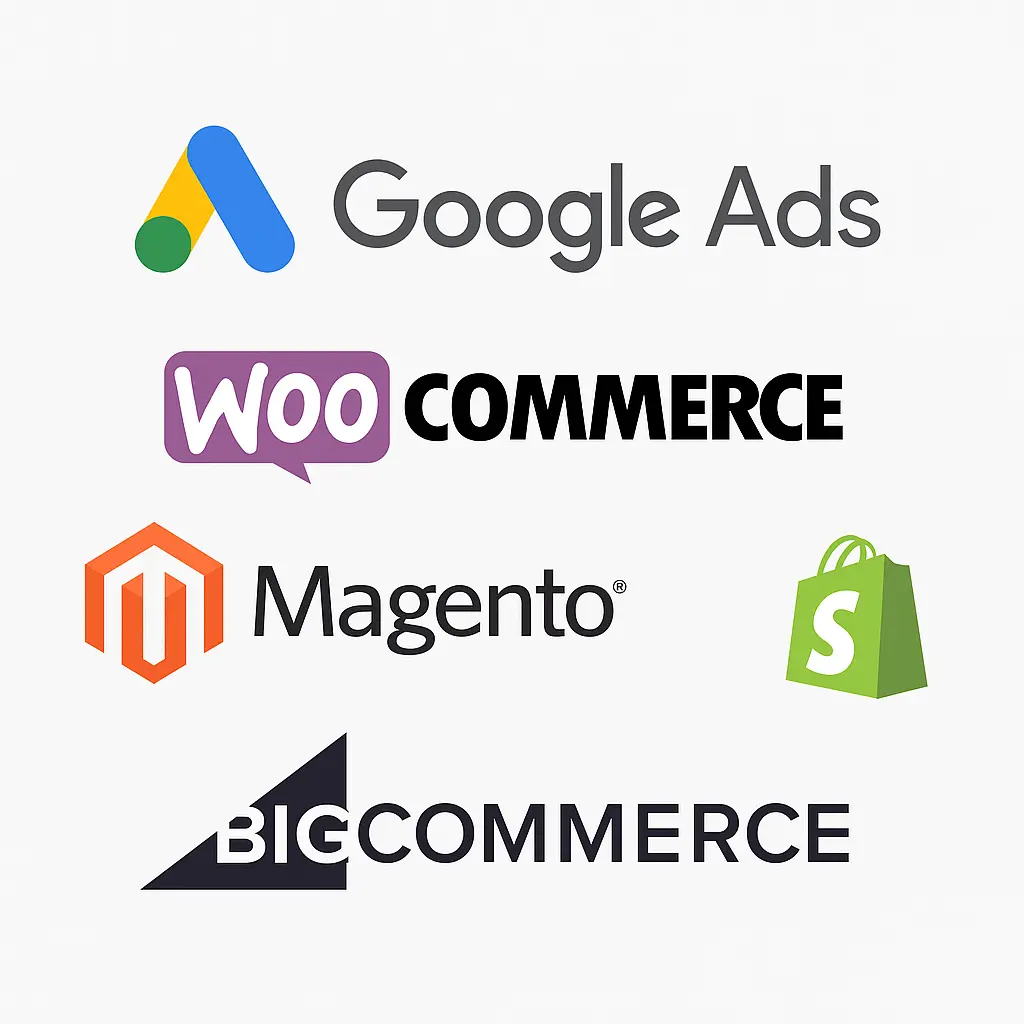What are search partners in Google Ads?
When setting up a Google Ads campaign on the search network, in the campaign settings, under the ‘Networks’ section, you will find an item that may seem secondary but can actually significantly affect performance: search partners. If you have explored the advanced settings of a campaign, you have probably noticed the option to include or exclude these partners. But what exactly are search partners in Google Ads? Is it always worth using them, or is it better to disable them in certain cases?
In this article, we will take an in-depth look at this often overlooked but crucial aspect of optimising the performance of your advertising campaigns. We will explain not only how search partners work, but also the advantages and disadvantages of using them. We will also show you when it is most strategic to include them and when not, based on your campaign objectives, available budget and target audience.
We will also discuss related terms and concepts, such as the Google Search Network, impressions, CTR (Click-Through Rate), traffic quality and conversion tracking. All of these elements are essential for understanding how campaigns perform when they extend beyond Google’s main search engine.
What are search partners in Google Ads
When we talk about “search partners”, we are referring to all those websites outside Google that are part of the search network. These sites host Google Ads, offering advertisers additional visibility. In practice, in addition to the classic ads that appear on Google in the classic search results page (SERP), ads can also be shown on smaller search engines, web portals and sites that have entered into advertising partnerships with Google, making themselves available to show its ads.
Search partners are part of the Google Search Network, which includes:
- Google.com and its local variants;
- Google Images, Google Shopping, Google Maps;
- Search partners, of course;
This extension allows you to expand the reach of your ads, but it also introduces additional variables in terms of traffic quality and relevance.
How search partners work
The way it works is very simple: when a user searches on one of the partner sites and their search is consistent with one of your campaign keywords, your ad may be displayed. The auction and ranking work in a similar way to Google, but the exact criteria may vary slightly depending on the partner platform.
It is important to note that you cannot know exactly which specific partners are showing your ads, as Google does not provide a detailed list. However, through segmented reports, you can understand how many impressions and clicks come from the partner network compared to Google.
The advantages of using search partners
Including search partners in your campaign can bring several benefits, especially if you have a goal of maximising coverage or want to increase visibility on a limited budget. Here are some reasons why you might decide to use them.
Greater coverage and traffic volume
The most obvious advantage is that search partners extend the visibility of your ads. This means you can reach more users, even those who don’t use Google directly but rely on other engines or portals that use Google for search.
Increasing traffic volume is particularly useful in the early stages of a campaign, or when working in highly competitive industries where every click can make a difference.
Potentially lower costs per click
Since competition on some search partners may be lower than on Google, you can get clicks at a lower cost. This is not guaranteed, but in many cases, data shows that the average CPC on partners tends to be lower.
If you have a limited budget and still want to acquire qualified traffic, partners can be an attractive opportunity to increase the efficiency of your spending.
The disadvantages of search partners
In addition to the advantages, it is also important to be aware of the challenges and risks associated with using search partners. This will allow you to make an informed choice based on the specific needs of your campaign.
Less control over traffic quality
One of the main issues advertisers encounter is that the quality of traffic from partners can be lower than that generated by Google Search. This can result in lower CTRs, short sessions, high bounce rates and, in general, lower conversions.
Since you cannot manually select partner sites or exclude them individually, you have less control over the actual placement of your ads, which can be a problem in terms of brand safety and performance optimisation.
Difficulty in monitoring and optimisation
Another critical issue is limited visibility in reports. Although you can segment data between Google Search and partners, you cannot see exactly which sites your ads appeared on. This makes it more difficult to optimise and manage campaigns in a granular way and tailor your message to the context in which it is shown.
Furthermore, if you are using automated bidding strategies (such as target CPA or target ROAS), data from lower-performing sources could negatively impact your algorithms.
When to use search partners: recommended scenarios
The decision to include search partners should not be taken lightly. It depends on multiple factors, such as your campaign objectives, budget availability, the stage of the funnel your offer is in, and the desired quality of traffic.
Brand awareness campaigns or initial testing
When the goal is to increase brand awareness or test new keywords or ads, search partners can help you gather useful data more quickly. The extra volume of clicks allows you to validate audience interest more broadly.
When launching a new product or service, including partners can give initial momentum to performance and help you gather data to optimise your strategy.
Limited budget but wide coverage desired
In contexts where the budget is limited but you still want to reach a wide audience, search partners can be an effective solution for improving the coverage-to-investment ratio. However, it is always necessary to carefully monitor traffic quality and take action quickly if the data is not satisfactory.
When to avoid search partners
There are situations where including search partners can be counterproductive, especially if the goal is to achieve high-quality conversions or if you work in highly regulated industries.
Conversion-oriented campaigns with precision targeting
If your main focus is on maximising return on investment (ROI), for example in a campaign with lead generation or e-commerce objectives, you may want to exclude search partners. In these cases, it is essential that every click is highly qualified, and the lower transparency of partners can be an obstacle.
Even if the CPC is lower, you may be spending your budget unnecessarily on clicks that do not lead to concrete results.
Campaigns for high-end brands or sensitive industries
For brands with a strong identity or operating in sensitive industries (e.g. finance, healthcare, legal), the visibility of the context in which the ad appears is crucial. In these cases, the inability to control partner sites can pose a reputational risk.
It is therefore better to focus exclusively on Google Search, where you know exactly how, where and by whom your ads are displayed.
How to monitor the results of search partners
Once activated, it is essential to monitor the performance of search partners to understand whether or not they are contributing positively to your campaign objectives.
Segmented report analysis
In the Google Ads panel, you can segment your data by “Network (with partner search)” to directly compare metrics between Google Search and partners. I recommend paying close attention to:
- CTR (click-through rate)
- CPC (cost per click)
- Conversion rate
- Cost per conversion
If you notice significant negative differences, you may want to consider excluding partners or limiting their use to specific ad groups or test campaigns.
A/B testing with and without partners
Another useful approach is to create two identical campaigns, one with active partners and one without. This allows you to directly measure the impact of partners on key metrics and make decisions based on hard data.
Remember: every industry behaves differently. What works for an e-commerce clothing retailer may not work for a B2B software company.
In summary: search partners, yes or no?
There is no universal answer to the question of whether or not to include search partners in Google Ads. As always in digital marketing, the choice depends on your goals, budget and context.
If you want to maximise coverage or gather initial data, partners can be a valuable resource. But if you’re aiming for qualified conversions and total control over traffic quality, then you might want to opt for a more selective strategy.
Our advice is to do what we do at GoogleAdsAgency, which is to always test and measure: only with data in hand can you confidently decide which path is best for your project.

